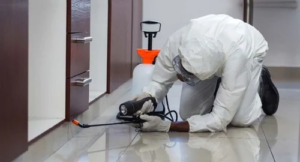Hair Extensions San Francisco offers instant length, volume and thickness to your strands, elevating your natural beauty. They also conceal thinning or bald spots, resulting in a lush and voluminous hair appearance.
These extensions can also add subtle highlights or pops of color to your strands without using bleaching or dyeing. However, determining the best hair extension type can feel overwhelming!

Hair extensions are the closely guarded secret of celebrities and their glam squads, but they can also be the perfect way to get your long-dreamed-of fuller tresses. It’s no wonder they are the go-to for many women looking to transform their look within a day or two. But if you are considering taking the plunge into the world of extensions, it’s best to work with a professional stylist to ensure that you not only get your dream look but also have the right care in place for longevity and minimal damage.
While hair extensions can help add length, the best types are those that add volume. There are numerous options for adding volume, including tape, clip-ins, or a more permanent method like fusion or micro-link. Each type of extension comes with its pros and cons, but they are all a great way to achieve the fuller, voluminous head of hair you’ve always wanted.
Clip-in hair extensions, for example, are small one-inch strands of wefts that clip into your natural tresses in a variety of widths. They are easy to use and, as the name suggests, not permanent, making them a great choice for anyone wanting a quick change-up or a non-permanent solution.
Another option is tape extensions, which are semi-permanent and applied using adhesive strips. These are a popular option because they cause minimal damage to your natural hair, last 4-8 weeks, and can be reused. For a more permanent solution, micro-links or the strand-by-strand technique may be right for you. This involves attaching a cluster of individual strands to tiny sections of your natural hair, which are then tightened with a special tool. This is a good choice for those with fine or thin hair as it helps create a more natural-looking fullness.
Other permanent methods include bonding, which requires braiding your hair and applying a glue to the roots; or hot fusion, which requires heating your natural hair before adding a weft of longer hair to the end. These tend to be more expensive, but they do last longer than the other types of temporary extensions. Whatever kind of hair extensions you choose, it’s important to care for them properly by being gentle with them and avoiding tugging or yanking at them while brushing. You’ll also want to shampoo with a sulfate-free conditioner to keep your tresses moisturized and healthy.
They Are Easy to Maintain
Hair extensions are an easy way to add length, volume or a pop of color without the commitment of a more permanent change. There are many different types of hair extensions, each with their own perks and drawbacks, so be sure to research before committing.
Whether you are looking for a touch up, want to try out a new style or simply want to boost your length, there is no better option than a high-quality hair extension. And, with a good maintenance routine, your hair will look great for weeks to come.
The best thing to do to maintain your hair is to keep up with a regular washing schedule. This will help to prevent matting and tangling, which is inevitable with any type of hair extension. Washing hair twice a week with a mild shampoo and conditioner is recommended, focusing on the roots and ends of your natural hair. Make sure to only use sulfate free shampoos and professional styling products as these will not strip your hair of its natural oils.
Brushing your hair extensions regularly is also important to help prevent tangles. Try to brush your hair at least twice a day, especially before bed. This will prevent any tangling while you sleep and ensure that your hair looks nice and smooth every morning and night.
Another way to reduce tangles is to use a silk or satin pillowcase, which will decrease friction between your natural hair and the extensions. It is also a good idea to avoid using hair products with ingredients like sulfates, silicones, and other drying chemicals that can strip your hair of its natural oils.
It is also a good idea to limit the amount of time that you style your hair with heat tools. Styling with heat can cause your hair to become dry and brittle, which will lead to more breakage and can require you to replace your hair more often. It is also a good idea to use a lightweight leave in conditioner to help protect your hair from the heat and to give it extra moisture.
They Are a Quick Transformation
Hair extensions can provide a complete look change in as little as an hour. There are several options available for adding length and volume, including clip-in extensions, micro ring hair extensions, tape-in hair extensions, and sew-in or weft extensions. The type that is best for you will depend on your budget, desired look, and lifestyle. Talk to a professional stylist to find out more about the types of extensions that are available and which one will work best for you.
The transformation offered by hair extensions is a great option for those looking to add a splash of color or change up their overall look without the commitment of a more permanent solution. They also provide a protective layer against heat styling and other factors that can cause damage to natural hair.
When cared for properly, hair extensions pose minimal damage to natural hair. It is important to use a gentle shampoo and conditioner, as well as to rinse with cool water. This can help to reduce tangling, which can lead to matting or even snarls. It is also a good idea to schedule regular maintenance appointments with a stylist, especially to keep your extensions in tip-top condition and blend them seamlessly with your natural hair.
Whether you are trying to bulk up thin hair or simply want a fuller appearance, there is no better option than hair extensions. With the variety of options now available, it is easier than ever to achieve a head-turning, beautiful new look.
The type of hair extension that you choose will depend on your budget, desired look, lifestyle, and how long you plan to wear them. Human hair extensions are more expensive than synthetic extensions, but they can be dyed and styled just like your own hair. They can also be re-used, making them a cost-effective and versatile way to transform your look.
They Are Affordable
Hair extensions are no longer the closely held secret of a select few glam squads. Today, they are more accessible than ever, with broad ranges in price points, hair types, and installation methods. There are also a variety of ways to wear them, allowing you to transform your look as often as you please – think waist-length waves in the morning and a dramatic hair color by night.
The first step is deciding on the type of hair extension you want to add to your look. There are two main options: synthetic or human hair. Human hair looks the most natural and can be styled just like your own strands, but it’s typically more expensive.
Clip-ins are a great choice for those looking for the most affordable option. They can be applied at home and can last years. The only drawback to this method is that the clips can pull on your natural hair if they aren’t secure enough, and you have to be very careful with how you brush and style your hair.
Tape ins offer another budget friendly option and are the easiest for blending into shorter styles such as bobs. They can be worn for up to eight weeks, and should be gently combed and washed with specialized shampoos and conditioners to avoid damage.
Another popular option is a sew-in weave. These are woven into small sections of your natural hair, creating a discrete, full appearance that blends well with all hair textures. They can be time consuming to apply, taking up to a few hours. However, they don’t require any glue or heat, so they cause minimal damage to your natural strands.
Other popular choices include micro beads, micro loops, beaded row extensions, and hair wefts. These are all considered to be safe and effective, but it’s important to consult with a licensed professional to ensure the best results for your individual needs. The key is to find a stylist that has experience with the type of extension you’re interested in so they can help guide you through your options and install it in the most safe and natural way possible.








